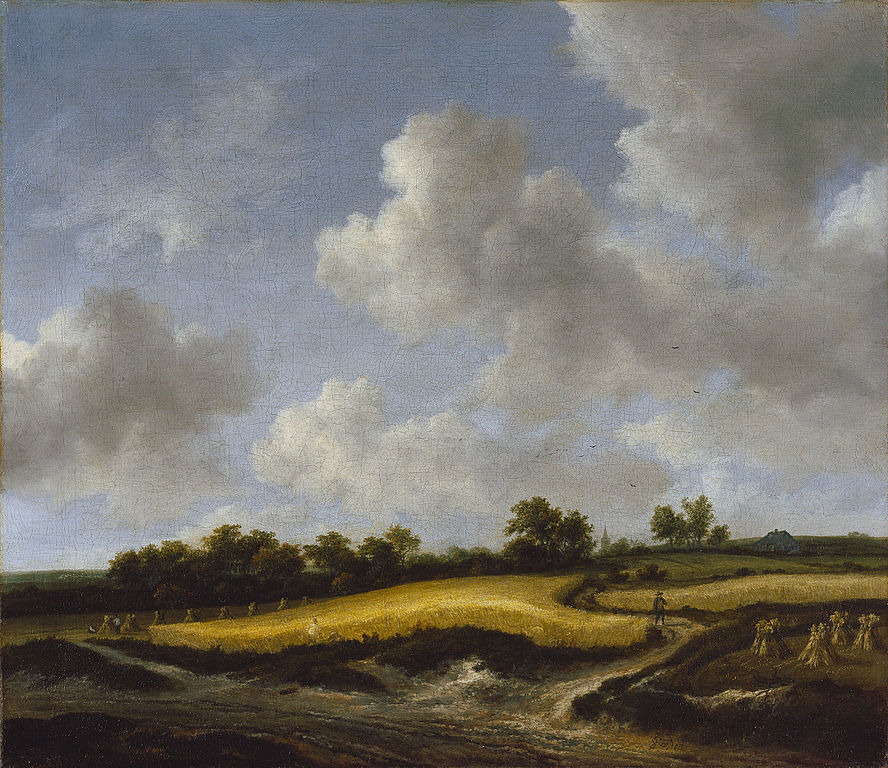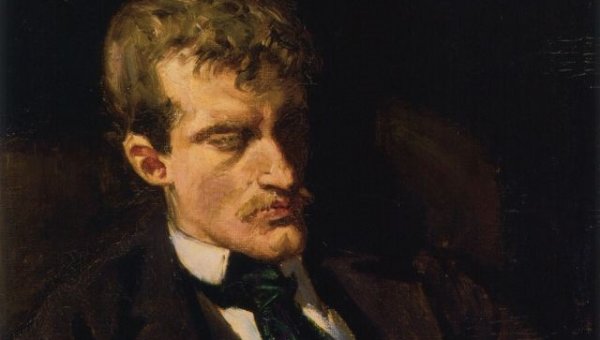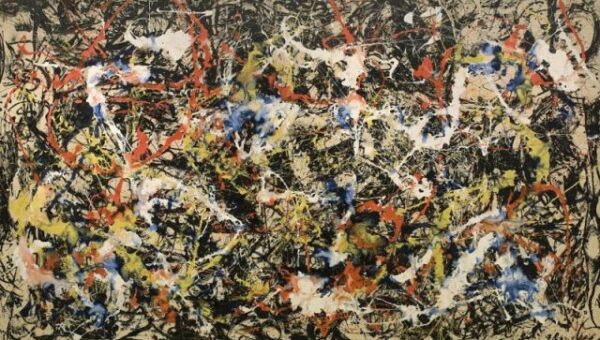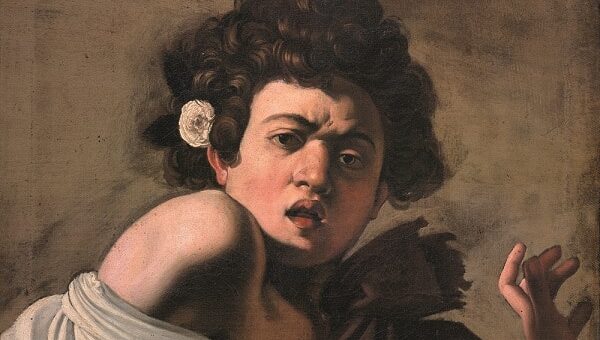
Best artists of all time: Jacob van Ruisdael (1629 - 1682)
Jacob Isaakszoon van Ruisdael was one of the most famous Dutch landscape painters of the 17th century. Jacob Isaakszoon van Ruisdael’s works are vivid examples of the art of painting landscapes. The master’s oeuvre depicts the beauty, diversity and power of the natural world.
Jacob Isaakszoon van Ruisdael was born in Haarlem. His father was an artist and frame-maker. His uncle was the great painter Salomon van Ruisdael, who achieved fame by creating attractive landscapes. It is likely that these talented relatives gave Ruisdael painting lessons when he was a child, and it was this that awakened an interest in art in him.
Jacob Isaakszoon van Ruisdael painted his first paintings in 1646. The young man was around 17 at the time, but his works were already demonstrating experience and talent. Between 1650 and 1653, the young man spent a lot of time travelling around the Netherlands and also visited Germany. In 1657 he moved to Amsterdam: in a big city like that he was able to earn money easily through his art. The artist would call the city his home for the rest of his life.
At first, the painter created landscapes that were true-to-life and that were a hymn to the beauty of nature and the uniqueness of the moment. Over time, some fantastical scenes started appearing in the works: this was the master’s way of trying to create more dramatic effects.
Jacob van Ruisdael was active for more than three decades. In that time, he developed his own unique, inimitable style. In his works, nature is put at the forefront, while man is merely a passer-by. From the melancholic tranquillity of a forest glade to water’s elemental power, each work evokes emotions all of its own.
Jacob van Ruisdael’s best-known paintings
River Landscape (1649) – this naturalistic landscape appears utterly still, sweltering under the summer heat. The people are shown in the form of tiny figures, as if to emphasize the magnificence of the natural world around them.
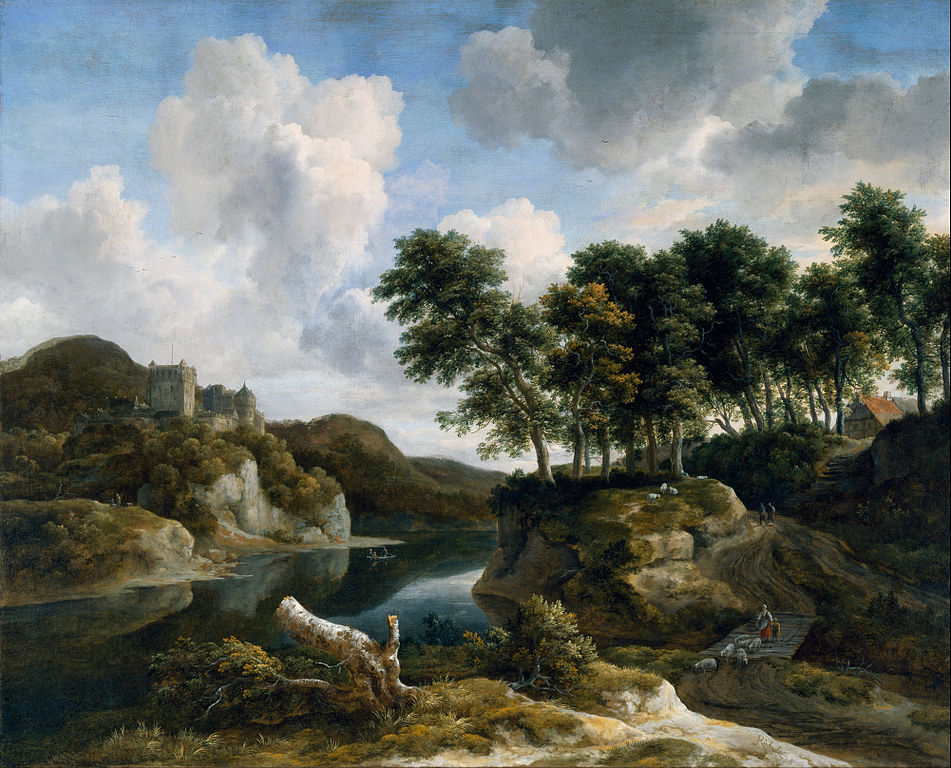
Jewish Cemetery (1660) is one of the artist’s most popular works. Two variants of the painting were created. This chef-d’oeuvre reminds us that nothing lasts forever. The storm clouds and the uprooted tree only intensify the oppressive atmosphere.
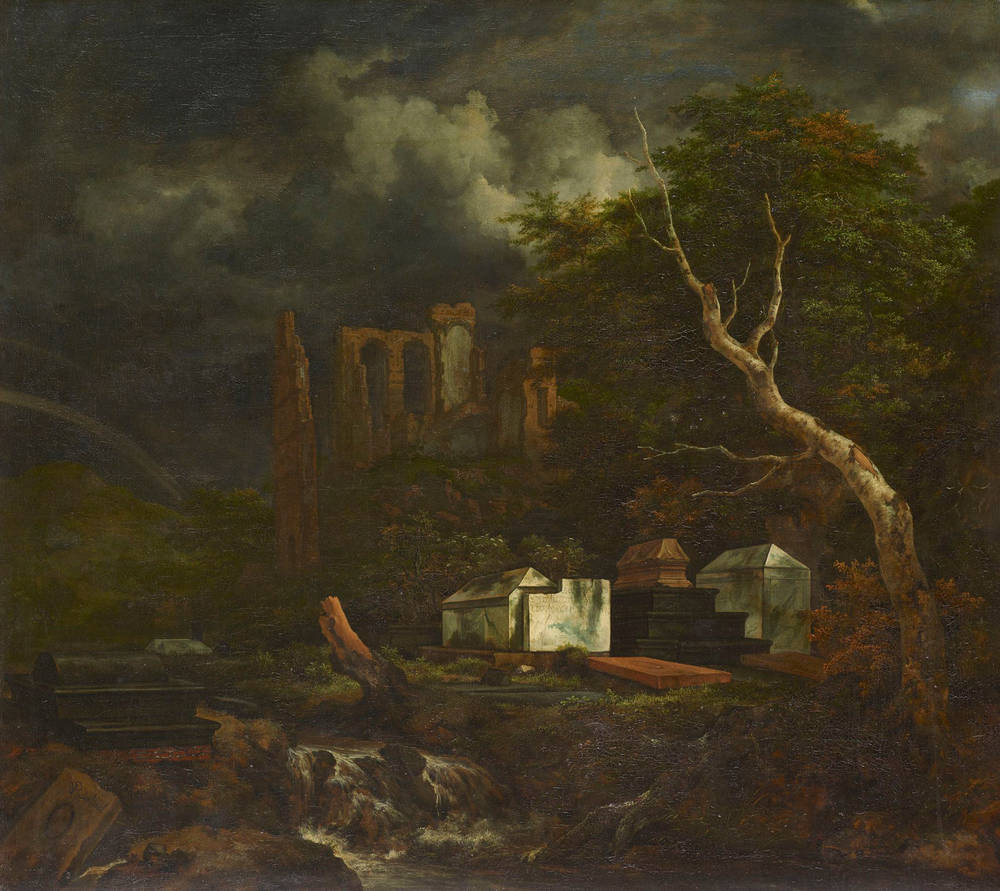
Wooded Landscape (1660) – this painting constitutes an exception to the rule. The landscape painter usually portrayed the woods as a fairly gloomy place. This work instead prompts the viewer to engage in quiet contemplation.
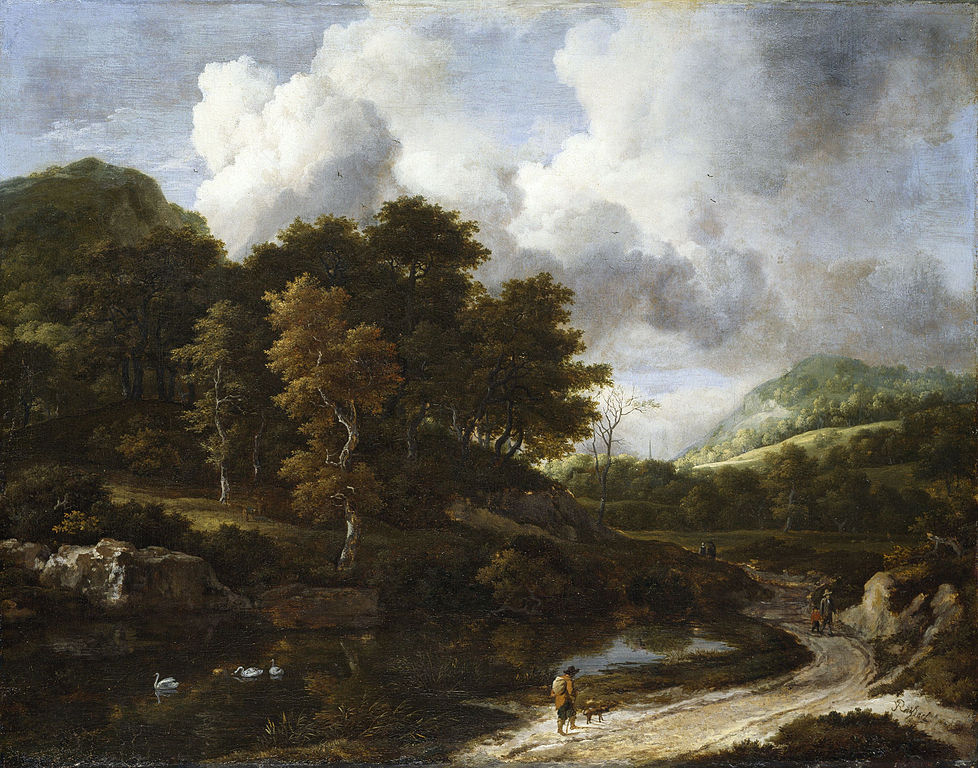
Windmill at Wijk Duurstede (1660) – there is something about windmills that lends itself to landscape paintings. Landscapes such as this usually look more joyous, but with this artist, everything is quite different. The clouds create a sense of the hostility of the natural world.
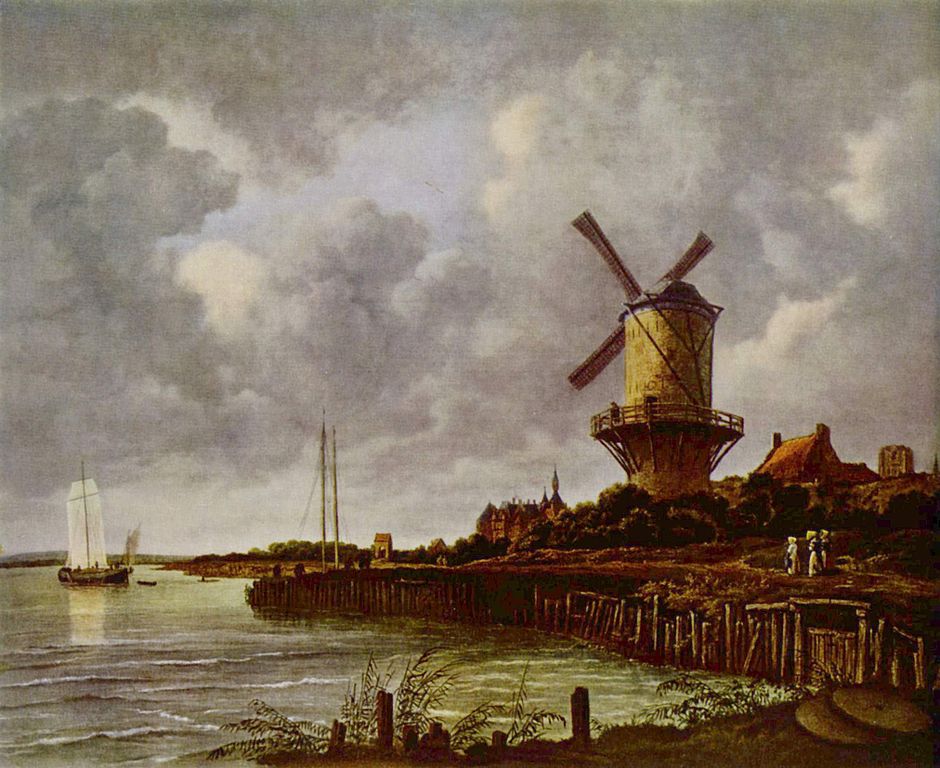
Wheat Fields (1670) – this work elicits mixed feelings. On the one hand, the endless fields and dark clouds depict the might of nature, which is not always well-inclined towards man. On the other, the sun can be seen glimpsing through the clouds, eliciting fairly positive feelings.
